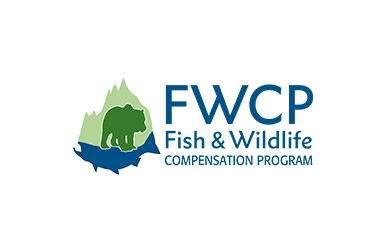
16 Feb The A Team of our Shore-Spawning Kokanee Restoration Project

Left to right: Joelle Burnie (FoKLSS staff), Gary Munro (Volunteer), and Molly Teather (FLNRORD) recording data and analyzing eggs. Photo: J. Siderius
Our Shore-Spawning Kokanee Habitat Restoration & Research Project is an all hands on deck initiative. From installing gravel, to monitoring spawning kokanee and their redds (nests), to installing egg capsules and retrieving them, every single step would not be possible without the help of a passionate team of knowledgeable experts or the support from our community.
As each year of this project unfolds, we gain crucial data that helps us better understand the habitat requirements and spawning behaviors of the rare and genetically district shore-spawning kokanee that return to spawn along west arm shorelines each fall.
On January 28, 2022, we were joined by local biologists, hydrologists, scuba divers, and volunteers to retrieve egg capsules containing Kokanee Salmon eggs that were installed in early November, 2021. The purpose of this study is to compare egg development between eggs installed in the original versus the restored substrate.
The divers plunged into the water, and biologists and volunteers assisted from shore or boat. We collected all 10 egg capsules, recorded the depth and time of retrieval, and whether there were macroinvertebrates present. Fish biologists then counted the eggs and assessed their development. Water temperature data loggers contained in each capsule were offloaded and the data was analyzed.
Observations
The capsules contained only dead eggs (and some invertebrates and substrate!), with some showing further signs of development than others. The egg tubes had, on average, 23 percent fewer eggs than when they were installed, indicating the likelihood of the development and subsequent escapement of about a quarter of the eggs installed. The control (original) substrate on average yielded up to 22% escapement, and the installed substrate yielded up to 24% escapement.
There are various likely reasons as to why most of the eggs didn’t develop, but two of the proposed factors are lack of nutrients and oxygen due to the confinement of the eggs within the capsules. Although most eggs in the capsules did die, they were more developed than the eggs we installed in the fall of 2020. This is likely due to the fact that in 2020 we used mesh inside the tubes to prevent escapement, whereas in 2021 we did not (the eggs were triploid, meaning infertile).
FoKLSS staff and ministry fish biologists are currently analyzing this year’s data and discussing the variables that lead to high egg mortality both years. They are also planning for our third year of our Shore-spawning Kokanee Habitat Restoration & Research Project and are using this data to improve restoration efforts at the site.


Photo 1 (left to right): Molly Teather (FLNRORD), Natasha Neuman (FLNRORD), Gary Mundro (Volunteer), Kirsten Clark (FLNRORD), and Kayla Tillapaugh (FoKLSS) retrieving egg capsules out of water. Photo 2: Egg capsule. Photos: J. Siderius
Learn more about our Shore-Spawning Kokanee Habitat Restoration Project here.
Thanks to our funders:




